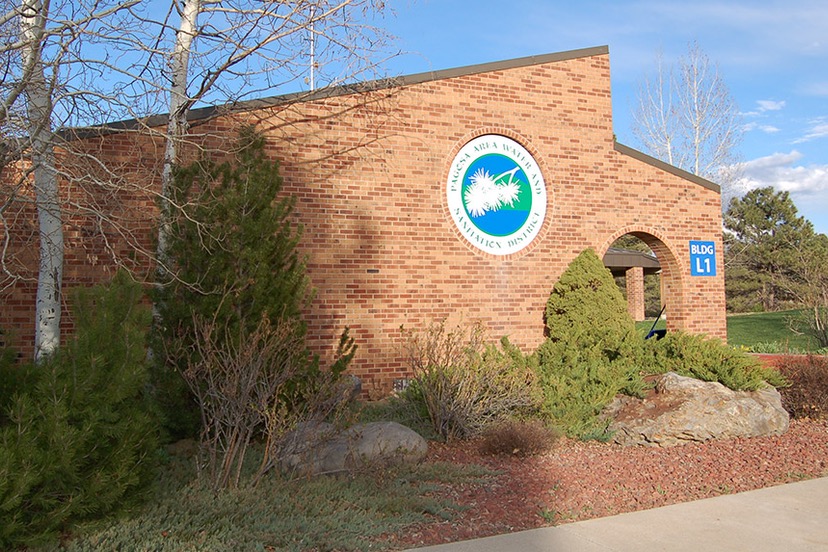The Pagosa Springs Area Water and Sanitation District (PAWSD) Board of Directors will be discussing rate increases at their meeting today, Tuesday November 14, at 3pm at the Lyn Avenue office meeting room.
Rates may be going up, in the near future. Dramatically?
Disclosure: I currently serve on the PAWSD Board of Directors, but this editorial reflects only my own opinions, and not necessarily the opinions of other Board members nor of the Board as a whole.
PAWSD was formed as governmental taxing district in the 1970s to provide drinking water and sanitation services to 21 square miles of new subdivisions and timeshare developments, originally referred to as Fairfield Pagosa, but more recently known as PLPOA (Pagosa Lakes Property Owners Association) and Club Wyndham Pagosa. PAWSD acquired the drinking water system for downtown Pagosa Springs, and surrounding subdivisions in the early 1990s, but the Town government retained its own sanitation district.
In 2016, the Town abandoned its failing lagoon treatment facility, and began pumping its sewage uphill through a seven-mile pipeline to the Vista Waste Water Treatment Plant. But the town customers continue to pay their bills to the Town’s PSSGID (Pagosa Springs Sanitation General Improvement District) and continue to be serviced by PSSGID.
After a near-failure of the Town’s pumping system two years ago, PSSGID and PAWSD began discussing a jointly-funded waste water treatment plant at the southern end of downtown. Both districts have retained consultants to look into the feasibility of a joint system that will not require waste water to be pumped uphill. But for the time being, the two districts are still functioning as separate sewer systems with separate governing boards.
The cost for sewer service within the PSSGID district is currently $53.50 a month, per ‘EU’. (When I moved to Pagosa in 1993, the cost was $8 a month.) The Town fee pays for the cost of maintaining the collection system, pumping the sewage uphill, and the cost of treating the sewage at the Vista plant. PAWSD charges the Town about $2 per 1,000 gallons of wastewater treated, and the Town sends about 250,000 gallons a day uphill to Vista.
An ‘EU’ is defined as the amount used by a typical single family house. Businesses often pay for multiple EUs.
The homes and businesses in the Pagosa Lakes area are served directly by PAWSD, not by PSSGID, and they pay $32.80 per EU per month for wastewater treatment. But that fee may be about the increase.
At tonight’s meeting, the PAWSD Board will be discussing some suggested rate increases calculated to account for the rising cost of labor, chemicals, and materials at PAWSD, as well as for maintenance and capital improvements. The numbers were developed by the global engineering firm Stantec based on estimates from PAWSD staff.
Although PAWSD is a governmental, taxing entity, it operates its two main services — provision of drinking water, and wastewater treatment — as if they were ‘businesses’. That is to say, the drinking water operations and the wastewater operations must be funded mainly by ‘customer fees’ rather than by taxes. This form of bookkeeping is called an “enterprise fund” and has certain financial advantages for a government utility.
There are basically five income streams paying for the PAWSD wastewater ‘enterprise’:
1. Monthly fees paid by existing residential and business customers.
2. Dumping fees paid by waste haulers serving local septic systems and ‘port-a-johns’.
3. Availability fees paid by still-undeveloped vacant properties within 100 fee of existing PAWSD infrastructure.
4. Capital Investment Fees (CIF) paid by new homes and businesses when they hook up to the PAWSD system.
5. Inclusion fees paid by properties newly joining the PAWSD district.
On the wastewater side, PAWSD has been barely meeting its expenses with its various fees. And the future outlook is apparently even worse. The following graph from Stantec suggests that, without a fee increase, the PAWSD wastewater fund will be almost $20 million in the red by 2032.

The black line indicates a “Reserve Requirement”, as calculated by Stantec.
To address this pending shortfall in the wastewater fund, the PAWSD Board will be considering changes to the monthly customer fees, and also, to the Capital Investment Fees charged to new homes and developments.
One aspect to calculating the fee increases is determining what costs are due to ongoing operations — to be paid mainly by monthly customer fees — and what costs will be generated by enlargements and improvements necessitated by growth — to be paid mainly by Capital Investment Fees.
Both types of fees appear headed for substantial increases.
The Stantec graph showing proposed increases in monthly customer fees shows the wastewater bill doubling over the next two years.

The current monthly fee for PAWSD sewer customers is currently $32.80. The suggested fee in 2025 is almost double that amount, at $64.29, which would be higher than the monthly fee charged by the Town district ($53.50).
The projection shows a monthly wastewater fee of $103.04 by 2031. More than triple the current fee.
Stantec also provided a graph showing comparable rates in various Colorado and New Mexico towns and cities, for a customer’s combined water/wastewater bill. PAWSD is already on the high end of the comparison in 2023.
By next year, it would be approaching the high fees charged in Durango.

And according to the preliminary Stantec estimates, PAWSD rates would soon surpass Durango’s current total, mainly as a result of the wastewater fees. (PAWSD drinking water fees are also scheduled to increase, but at a more gradual rate.)
As mentioned, the PAWSD Board will be discussing the Stantec rate study today at their 5pm meeting, at the PAWSD offices on Lyn Avenue.
Traditionally, the Board has welcomed comments from the public during their discussions.

